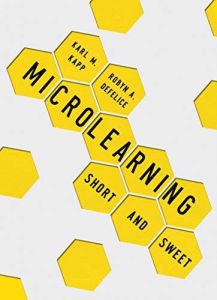Join getAbstract to access the summary!

Join getAbstract to access the summary!
Karl M. Kapp and Robyn A. Defelice
Microlearning Short and Sweet
ATD, 2019
What's inside?
The essential microguide to microlearning, from planning to design and evaluation.
Recommendation
This pocket guide to microlearning delivers what its subtitle promises: The text is short because the authors include only the most important elements of the topic; it’s sweet because they summarize key take-aways at the end of each chapter and offer useful case studies and clear examples throughout to illustrate important themes. Readers will gain an understanding of what microlearning is and isn’t, when to use it (and when not to), what to include and what common pitfalls to avoid. Those new to microlearning planning, design, implementation and evaluation won’t find a better introduction to the topic.
Summary
About the Authors
Karl M. Kapp and Robyn A. Defelice teach learning design and instructional technology at Bloomsburg University.





















Comment on this summary